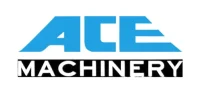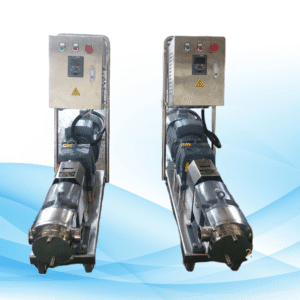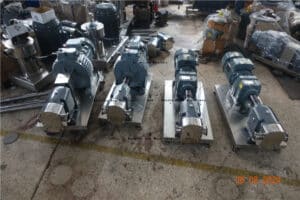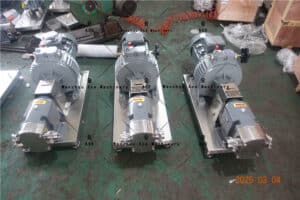When working in the field of pharmaceuticals, cosmetics, and food processing where precise mixing, emulsification, and particle size reduction is required, it is important to decide whether to go for a high shear mixer or a homogenizer. This article explains what they are, how to use them, and what you should take into consideration when buying them.
What are High Shear Mixers?
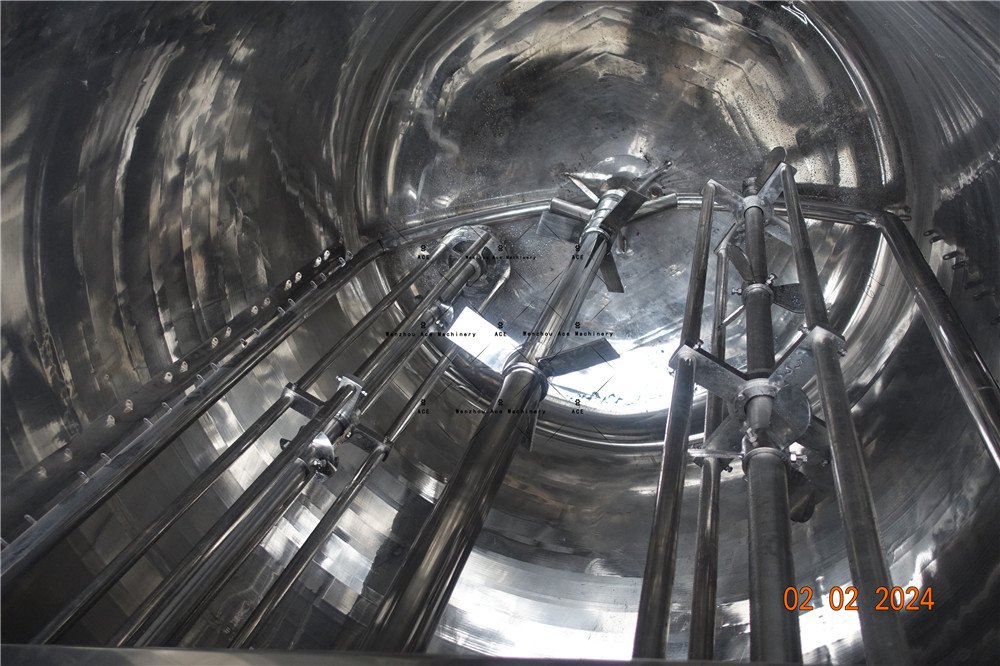
High Shear Mixers are high speed and high power mixers that can mix up a batch of ingredients within a short time span. Any homogenizing high power emulsifying mixer that can emulsify formulation is indeed a high shear mixer. Their main purpose is to breakdown of particles, dispersing and smoothing them for better mixing.
Most Common and Dominant Uses of High Shear Mixers:
- Food Industry: For making sauces, dressings and other such ingredients with thick consistencies.
- Pharmaceuticals: Creams lotions and other such products that are semi-solid.
- Cosmetic: Aha! These one’s a no-brainer, emulsifying oils, pastes and gels.
- Chemicals: Producing concentrated emulsions and suspensions.
What is a Homogenizer

Homogenizers are fascinating devices that effectively break down particles to create uniform coupled mixtures through substantial pressure and mechanical energy. The equipment works by forcing a liquid through tiny openings or meshes, which helps to break up the particles into fine, small pieces and make them to be well distributed. As a result, homogenizers are employed in applications that require a more or less equal particle size within the mixture, for instance dairy, pharmaceutical and some specialized cosmetics.
Uses of Homogenizers:
- Food and Beverages: Used mainly in the homogenization process of milk and juices to prevent them from separating.
- Pharmaceutical: For certain insulin drugs that are injected and which requires smaller particles.
- Cosmetics: Suitable for creams and serums that need consistency and smoothness.
- Chemical Processing: To form emulsions or suspensions that are stable at a microscopic level.
High Shear Mixer vs. Homogenizer: Key Differences
While both devices are designed to achieve uniform mixtures, they operate differently and are suited for different applications.
| Feature | High Shear Mixer | Homogenizer |
|---|---|---|
| Function | High-speed rotation for shear force | High pressure for particle reduction |
| Primary Application | Emulsification, general mixing | Particle size reduction, creating stable emulsions |
| Particle Size | Moderate particle size reduction | Ultra-fine particle size (micron-level) |
| Processing Speed | High-speed mixing, but not as fine | Intensive pressure, creating stable solutions |
| Maintenance | Easier to maintain | Generally requires more upkeep due to pressure |
| Best For | Thick emulsions and general dispersions | Applications needing stable, fine suspensions |
A Comparison Between a High Shear Mixer and a Homogenizer
These decisions will be influenced by your raw materials, required texture, and respective field standards. Some points to consider include:
Particles
For mayonnaise and olives as an example, when a very fine particle size distribution is needed, then homogenizers are the best bet.
Best Mix
As to emulsifying efficiency, homogenizers are more efficient emulsifiers than high shear mixers, but only for liquids that require extremely high viscosity RCMs.
Thickness
Thicker products like creams and gels are best suited for high shear mixers, as they are more effective for thicker viscosity emulsions.
Size
High shear mixers are most effective when mixing larger quantities or large batches and require less energy, while homogenizers are best suited for smaller applications.
Popular Brands of High Shear Mixers
Time Saving
Gets the job done faster and gets the desired uniformity in a shorter time frame.
Wide Range
It is the most ideal for high viscosity formulations, making it alternatively suitable for cosmetic, food and pharmaceutical industry.
Cleaning
These mixers do not require heavy cleaning and are easy to maintain.
Choosing a Homogenizer
With Standard and High
Helps in achieving consistent particle aggregates, which is a requirement for a majority of Pharmaceutical products.
What Mix
High saturation mix improves the emulsifiable mixtures, which increases the shelf life of the mixture.
Accurate
These mixers are equipped with the ability to handle precision mixing and control the mix result for satisfying repeatable outcomes.
Which One is Right for Your Industry?
Homogenizers and high shear mixers are useful devices in particular industrial domains.
Food and Beverage
The most remarkable application of homogenizers is in juice processing and dairy products manufacturing for the even distribution of the particles and their stability. High shear mixers work best for thicker food items looking for a fast mix without having a stringent requirement for fine particle distribution.
Pharmaceuticals
There is a preference for homogenizers when the dosage forms are injectable suspended or inhaled powdered drug products, as the particle size should be small. Semi-solid formulations for instance creams and gels are manufactured using a high shear mixer.
Cosmetics
Both can be used in cosmetics, but homogenizers are best suited for delicate products that need to be smooth and fine, such as serums. High shear mixers are usually necessary in products that require thick formulations, such as emulsions and gels.
Frequently Asked Questions (FAQ)
Can I use a high shear mixer in place of a homogenizer?
High shear mixers can emulsify the ingredients and mix them together but not to a particle size that is smaller to that of a homogenizer, therefore they are not able to replace homogenizers. For applications requiring particles of exceedingly fine size, a homogenizer is the better choice.
Is a homogenizer more energy-consuming than a high shear mixer?
Homogenizer makes the process more complicated as due to fine particle reduction more pressure is used meaning there is an extra load on the motors, which leads to high operational energy consumption compared to shear mixers, which require relatively less energy to work.
Is specific maintenance a requisite with high shear mixers?
Due to their simple design, high shear mixers are very easy in maintenance compared to other equipment such as high-pressure homogenizers. It is advised to routinely check rotors and stators for breakdowns and maintenance use.
Is there a noticeable price difference between high shear mixers and homogenizers?
It is due to its high functional ability cost more than mixers, as a high-shear attachments function at lower pressure and are easy to handle. Due to high mechanized attachment, a homogenizer cost more money than mixers.
Are high viscosity products suitable with homogenizers?
High shear mixers are substantially more appropriate for thick products thanks to their strength and flexibility, although homogenizers are not the best choice for thick applications.
Which equipment is suitable for emulsifying water and oil?
It is possible to emulsify both oils and water using both. But if emulsified more so, homogenizers are better due to the finer emulsions they create with higher levels of stability, making them more ideal for long-lasting products.
What is the difference between a homogenizer and a high shear mixer in terms of their lifespan?
The two types of equipment are similar in lifespan – they both last 10–15 years but depending on the pressure components used on the homogenizer, it might wear out faster compared to a high shear mixer.
Will I be able to use a high shear mixer and a homogenizer in the lab?
In the lab-scale versions of the two devices, yes. For larger batches of small tests, high shear mixers may be advantageous, while for lab-controlled environments, homogenizers would be preferred as they are more precise and can be used repeatedly.
What is the distinction between an inline high shear mixer and a batch high shear mixer?
Batch high shear mixers are used to mix smaller quantities all at once, making the mixing ratios for each ingredient more precise (plus the amount of time spent mixing) whereas inline mixers blend the ingredients one after the other.
Is it necessary to install a cooling system for a homogenizer?
Yes, overheating might be a result of the pressure generating heat, thus high strength homogenizers may need additions such as cooling systems.
Conclusion
When choosing between a high shear mixer and a homogenizer, carefully assess the needs of your product, the desired viscosity, and your finances too. Homogenizers are the best solution for those applications where high stability and ultra-fine particles are required. A high shear mixer may be more appropriate if you want flexibility and easy and fast maintenance. Pick your devices wisely so that the effectiveness and quality of the goods produced during the manufacturing processes will be at the highest possible level.
